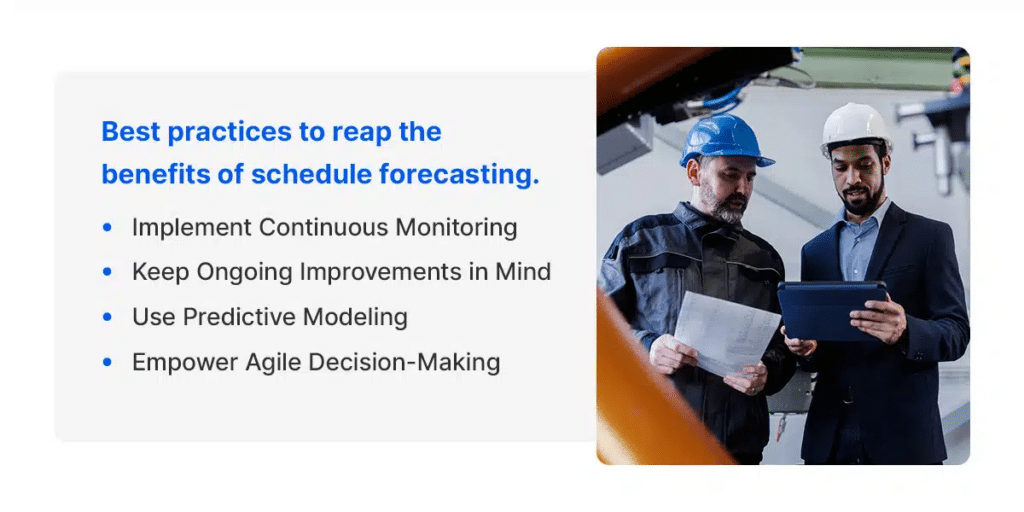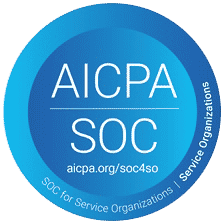What is labor forecasting? The Labor forecasting definition is a crucial process in workforce management that helps organizations predict future labor needs and ensure optimal staffing levels. By anticipating the demand for labor, companies can align their workforce capacity with business operations, improving productivity and efficiency. Labor forecasting is essential in avoiding costly under- or over-staffing, streamlining operations, and maintaining a smooth workflow. In today’s dynamic business environment, accurate forecasting plays a pivotal role in a company’s overall success, helping improve decision-making and enhance long-term operational efficiency.
Understanding Labor Forecasting
Labor forecasting refers to the process of predicting an organization’s future labor needs based on historical data, market conditions, and business trends. It helps businesses determine the number of employees required to meet future operational demands, ensuring that staffing levels are appropriately aligned with demand.
Key objectives include:
- Preventing labor shortages or surpluses
- Reducing operational disruptions
- Optimizing labor costs
- Supporting workforce planning and scheduling
Challenges in Labor Forecasting
While labor forecasting offers significant benefits, it also presents several challenges that organizations must address to ensure accurate and effective predictions. Some of the key challenges include:
- Employee Retention and Turnover: Workers grappling with unpredictable schedules, such as being on call or having shifts canceled at the last minute, have a 35% to 42% likelihood of leaving their jobs within six months, compared to a 24% turnover rate among those with more stable schedules. This highlights the importance of not only accurately forecasting labor needs but also ensuring stable, predictable scheduling practices to reduce turnover and enhance employee satisfaction.
- Data Accuracy and Reliability Issues: Inaccurate, incomplete, or outdated data can lead to incorrect labor forecasts, which may result in overstaffing or understaffing. For instance, inaccurate sales projections or workforce performance data can skew predictions, causing businesses to either hire too many employees or fail to meet demand. This can negatively affect both operational efficiency and the bottom line.
- Managing Workforce Fluctuations: Labor needs can change rapidly due to unexpected events like economic downturns, technological disruptions, or pandemics. For example, during economic recessions or industry-specific slowdowns, businesses may experience a sudden drop in labor demand, leading to workforce reductions. Conversely, during periods of rapid growth or demand spikes, companies may struggle to quickly hire sufficient talent to meet needs. These fluctuations make it a dynamic, ongoing process rather than a one-time event.
- Aligning Forecasting with Business Strategy and Goals: Forecasting must be closely aligned with broader organizational goals and strategies to ensure it supports business objectives. A mismatch between forecasting and business strategy can lead to inefficiencies, such as overstaffing during a period of strategic contraction or understaffing when the business is scaling rapidly.
- Overcoming Resistance to Change in Traditional Forecasting Methods: Organizations accustomed to manual or outdated forecasting techniques may face challenges in adopting more advanced methods. Shifting to modern, data-driven forecasting approaches often requires overcoming resistance from employees and managers who are used to traditional systems, and integrating new tools can be resource-intensive.
The Benefits of Labor Forecasting
The importance of labor forecasting extends beyond simply ensuring the right number of employees are on hand. Some key benefits include:
- Improved Labor Cost Control: By leveraging accurate forecasting, organizations can anticipate workforce demands with precision, preventing unnecessary payroll expenses due to overstaffing while also avoiding the operational risks associated with understaffing. This proactive approach helps optimize labor budgets and improve financial efficiency.
- Enhanced Operational Efficiency and Productivity: Proper forecasting ensures that businesses consistently have the right number of employees scheduled to meet fluctuating demand. This reduces bottlenecks, minimizes downtime, and allows operations to run smoothly, ultimately boosting overall productivity and service levels.
- Reduced Labor Shortages and Overstaffing: By analyzing historical trends and real-time data, forecasting enables businesses to maintain optimal staffing levels. This minimizes the negative impacts of labor shortages, such as disrupted workflows and decreased output, while also preventing unnecessary labor costs from overstaffing.
- Better Employee Satisfaction and Retention: Employees thrive in environments where workloads are balanced, schedules are predictable, and burnout is minimized. Effective forecasting ensures fair and efficient scheduling, reducing stress and frustration while fostering a workplace culture that encourages long-term retention.
- Enhanced Compliance with Labor Regulations: Keeping up with complex labor laws and industry regulations is essential to avoid costly penalties and legal risks. A data-driven approach to forecasting helps businesses create fair schedules, adhere to working hour limits, and comply with wage and hour laws, reducing the likelihood of violations.

How Labor Forecasting Works
Labor forecasting relies on the collection and analysis of accurate data to predict future labor needs. Organizations typically begin by gathering historical data, which includes information such as employee performance, production rates, sales figures, and customer demand. This data is crucial as it helps establish patterns that can be analyzed to project future labor requirements.
A key aspect of forecasting is predicting the balance between labor demand and labor supply. This requires comparing the number of employees available with the projected demand for labor. Through this comparison, businesses can identify potential skill gaps or workforce shortages before they occur, allowing them to take proactive measures to ensure they have the right staff in place at the right time.
In recent years, technological advancements have played a significant role in improving the process. Tools powered by AI and machine learning can now automate data analysis, identifying trends and patterns that might be missed through manual methods. These technologies provide a more precise forecast by processing vast amounts of data quickly and identifying subtle correlations that human analysis might overlook.
Key Inputs for Labor Forecasting
Several factors influence labor forecasting and should be taken into account to ensure accurate predictions:
- Seasonal and cyclical demands: Businesses in industries such as retail, hospitality, and agriculture often experience fluctuating labor demands based on seasonal trends. It takes these cycles into account to ensure staffing needs are met.
- Industry-specific variables: Certain industries have unique labor requirements. For example, manufacturing might experience demand fluctuations based on production cycles, while healthcare requires forecasting around patient load.
- Economic factors: Broader economic conditions, such as unemployment rates or overall economic growth, influence labor supply and demand. It accounts for these factors to ensure predictions align with market conditions.
- Technological changes and automation impact: The growing adoption of automation and new technologies can significantly affect labor needs. It considers these trends to predict workforce shifts and skill requirements.
Labor Forecasting Approaches
There are several labor forecasting approaches that organizations can adopt, each with its strengths, limitations, and areas of application. The choice of method often depends on the availability of data, the nature of the industry, and the forecasting timeline. Below are the most commonly used forecasting techniques, each offering a different way to predict labor requirements.
1. Historical Analysis
Historical Analysis is one of the most straightforward and commonly used methods for forecasting. It involves analyzing past data to predict future labor needs. This data can include employee headcount, production levels, sales volume, or other relevant operational metrics. By identifying patterns in historical data, organizations can forecast labor demand based on trends observed over time. For example, if a retail business consistently experiences increased foot traffic during holiday seasons, past data can help predict the need for additional staff during similar periods in the future. This method works well for businesses with stable and predictable labor needs. However, it may be less effective in environments with high volatility or rapid change.
2. Market Research
Market Research is another valuable technique, particularly for companies operating in dynamic industries or those seeking to understand external factors that could impact labor needs. This method involves studying industry reports, economic trends, and competitor performance to forecast labor requirements. By keeping a close eye on market conditions—such as consumer demand, technological advancements, or emerging industry trends—organizations can better anticipate the labor force needed to stay competitive. For example, if a company in the manufacturing sector learns that its competitors are investing heavily in automation, it may forecast a shift in labor demand, needing fewer manual workers but more employees skilled in machine operation and maintenance.
3. Delphi Method
The Delphi Method is a more qualitative approach that gathers insights from a panel of experts within an organization. These experts, who are typically experienced managers or industry specialists, provide their forecasts based on knowledge, intuition, and experience. The process involves multiple rounds of questioning, where experts submit their individual predictions, which are then aggregated and shared with the group. The panel members can revise their responses after seeing the collective input, aiming to reach a consensus. The Delphi Method works well when data is scarce or when forecasting requires the input of specialized knowledge, but it can be time-consuming and subject to bias depending on the experts involved.
4. Advanced Quantitative Method
The Advanced Quantitative Method use statistical and mathematical techniques to generate more precise labor forecasts. These methods often involve complex models, such as regression analysis, that examine various variables (e.g., sales, production, market conditions) to predict labor demand. By establishing relationships between key factors and labor requirements, businesses can create more accurate, data-driven forecasts. These models are particularly useful for companies with large-scale operations and ample historical data, as they allow for sophisticated forecasting that can account for multiple variables simultaneously. However, they can also be resource-intensive to develop and maintain, requiring expertise in data analysis and access to comprehensive datasets.
5. Managerial Judgment
Managerial Judgement is often employed in situations where data is limited or forecasting is required in a more uncertain environment. In such cases, experienced managers and decision-makers use their intuition, industry knowledge, and judgment to estimate future labor demand. This approach is especially useful when forecasting for new projects, startups, or industries with less historical data. While it can provide valuable insights in situations of uncertainty, it also carries a higher risk of inaccuracy, as it is heavily dependent on the individual manager’s experience and perspective.
Each of these approaches has its place in labor forecasting, depending on the available data, the scope of the forecast, and the resources at hand. Often, businesses will combine multiple methods to develop a more robust and reliable forecast, balancing quantitative models with expert input and market analysis.

Labor Forecasting Equation
Labor forecasting = Demand forecasting + Labor modeling
Labor forecasting can be broken down into two core components:
- Demand forecasting predicts the future need for goods or services, which directly impacts the required labor. For example, if demand for a product increases, more employees may be needed to meet that demand.
- Labor modeling analyzes the available workforce and how they can best meet demand. It factors in skills, experience, and availability to ensure the correct personnel are in place to meet operational needs.
What is an Example of Labor Demand Forecasting?
A retailer might use labor demand forecasting to predict the number of employees required during peak shopping seasons, such as the holidays. By analyzing historical sales data, foot traffic patterns, and customer behavior, the company can forecast the number of staff needed in different departments to meet customer demand. This ensures they have the right number of employees without overstaffing.
How to Forecast Labor Costs?
Labor costs represent a substantial portion of overall business expenses, and effectively forecasting these costs is crucial to maintaining financial health. By accurately predicting labor needs, companies can avoid over- or under-staffing, which can lead to unnecessary expenditures. To forecast labor costs with precision, businesses must first analyze historical data, such as previous labor costs, staffing patterns, production demands, and operational efficiency. This historical insight helps create a solid foundation for predicting future labor requirements.
In addition to predicting labor needs, it’s important to factor in wage rates, benefits, and overtime, as these elements significantly influence overall labor costs. When calculating future labor expenses, organizations should also consider the specific compensation structure, seasonal changes, and any potential increases in wages or benefits. Changes in labor laws or regulations, such as minimum wage adjustments or shifts in overtime eligibility, should also be accounted for, as they can have a direct impact on the cost structure.
Finally, utilizing software tools to track and manage labor costs in real time can greatly enhance forecasting accuracy. These tools provide up-to-date data, allowing businesses to adjust their staffing levels and costs dynamically as market conditions and operational demands evolve. By integrating real-time tracking, organizations can ensure their labor forecasting techniques remains responsive and accurate, minimizing the risk of budget overruns.
Workforce Management for Labor Forecasting
Labor forecasting software is an essential tool for any organization looking to optimize its workforce planning and management. By accurately predicting labor needs, businesses can improve operational efficiency, reduce costs, and enhance employee satisfaction. The various forecasting methods, such as historical analysis, market research, and advanced quantitative techniques, offer different ways to approach labor prediction. With the right tools, data, and strategies, organizations can leverage it to ensure they have the right workforce in place at the right time.
To stay ahead of the competition, businesses should adopt forecasting to optimize their workforce management processes. This not only improves bottom-line performance but also strengthens long-term business resilience.
About the Author
Claire Pieper is the Digital Marketing Specialist for Indeavor. In her role, she specializes in crafting strategic and engaging content, ensuring that customers are well-informed. Claire is dedicated to enhancing the customer experience and optimizing the user journey through Indeavor’s solutions. To learn more or get in touch, connect with Claire on LinkedIn.







